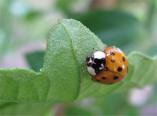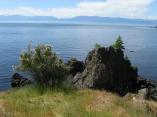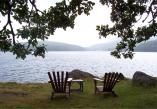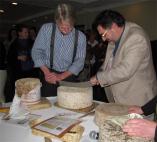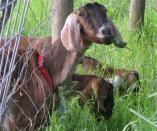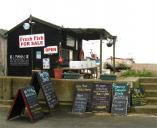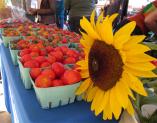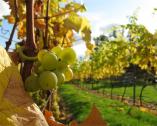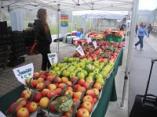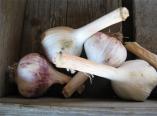A bit of a pause here while I deal with my recent computer crash (a literal one, onto the floor) and so have delayed reporting on a couple of very interesting talks last week. On Thursday last, I attended a COG-VI meeting to hear a discussion of grain growing on Vancouver Island.
Tom Henry, to many a bit of a guru in this field, spoke first about his experiments with Red Fife wheat, using organic and conventional growing methods. He said that it was, in his experience, almost impossible to grow a flour-grade red fife wheat that was certified organic. The reasons were to do with weed control and nutrients. Organic growing, he said, means a later start than conventional, because you have to leave time for weed control: wait till the ground is workable, let the weeds grow, till them under and plant your seed. In order to gain enough protein to be usable in bread flour, the red fife has to be drought-stressed at the right point in its growing cycle. But a later planting means that the drought period comes earlier for the seedlings.
Prairie growers don’t suffer this problem because of differences in climate, so it’s easier to get organic red fife wheat with appropriate protein content from there. And easier to balance land use: he observed that in a small land base like Vancouver Island, it’s hard to justify digging in a legume crop to prepare the soil for a grain crop; overall it would take four years to set up one crop. That having been said he also observed that until 1949 this was the best grain growing area in BC because of climate (although this was likely grain for animal feed rather than for milling).
Another interesting point that Henry raised was that most home bakers used to conventional flours run into difficulties using flours made from artisanal grains like red fife. This is back to protein: artisanal flours are typically lower in gluten proteins than the ‘bread flour’ we’re used to which is extremely high protein (but lacking in the flavours and nutrients of artisanal grains). But if the proteins are good quality, even if they’re low, you can get good bread with proper handling. In addition, higher protein flours absorb more water and the resulting breads keep longer. These differences can usually, as I understand it, be overcome to some extent by using levain or longer-rising recipes (perhaps like the famous no-knead bread recipes), and of course by mixing artisanal with high protein bread flours.
After Henry, we heard from Brock McLeod and Heather Walker, whose Island Grains project consisted of a very successful grain CSA last year. They invited members of the public – some farmers, some just interested people – to come and learn with them how to grow grains on a small scale and were awestruck at the response. 51 people had signed up in just three weeks. Participants were given a piece of land and shown how to plant, tend and harvest it, by having a series of speakers walk them through the various elements.
They took this on in a spirit of self-sufficiency, and were extremely low-tech about it, harvesting the grain with scythe and scissors; threshing in a pillowcase and blowing the chaff with a hairdryer. They are upbeat about their experience, and said that you could grow enough grain on a very small amount of land – 1,100 square feet – to make 60 lbs. flour, which amounts to a couple of loaves of bread a week for a year.
They’re now using their website to share information about small-scale grain growing.
